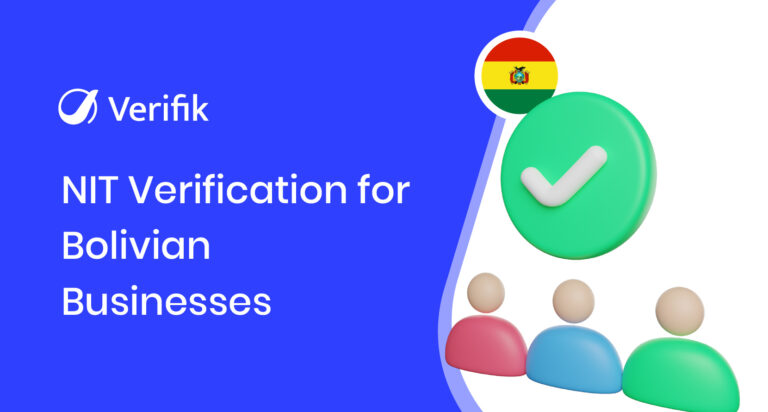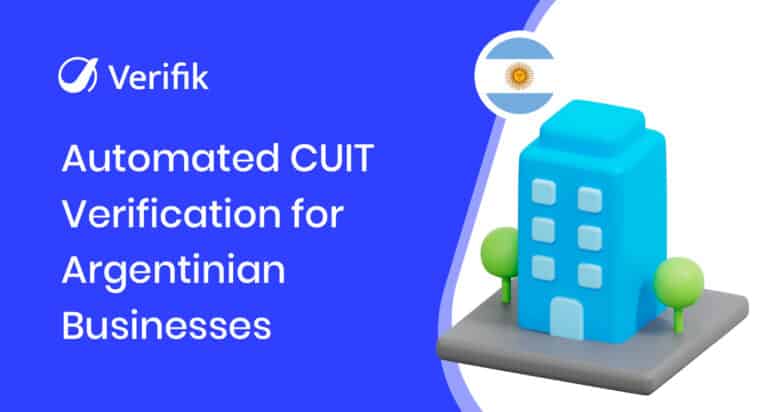Identity verification has emerged as a crucial solution to address security challenges in the digital age. Its application or use cases are not limited to a single domain.
Various industries, from healthcare to banking, are adopting this technology to improve security and optimize processes.
This blog will focus on the use cases of identity verification in different industries, highlighting practical examples and the benefits they offer. We will tell you how this tool is redefining security and efficiency standards in multiple fields.
Evolution of identity verification in the digital age
Identity verification has come a long way from its beginnings to today’s sophisticated technologies. The evolution of these technologies has been essential to adapt to new threats and demands in the digital age. Where cybersecurity and fraud protection are crucial for businesses.
Identity verification relied heavily on manual and physical methods in its early stages. Such as validation through paper documents and in-person identity confirmation. However, with the rise of digitization and the increase in online transactions have increased the need for more robust and effective solutions.
Biometric technologies such as facial recognition have marked a significant shift. By utilizing the unique and inimitable characteristics of each individual. Undoubtedly these technologies offer a higher level of security than traditional methods.
Identity verification today is focused on authenticating users and improving the customer experience. Processes have become more agile and less error-prone. All this thanks to the adoption of technologies such as one-time passwords (OTP).
These advances improve security and facilitate faster and easier access for users.
Benefits of identity verification for businesses
Due to its multiple advantages or use cases, identity verification has become an essential tool for companies. Not only do they improve security, efficiency and confidence in operational processes. These benefits are critical to any company trying to protect its assets and maximize the performance of its operations.
Reducing fraud and security risks: The implementation of verification solutions has a significant impact on reducing fraud. Especially with advanced technologies such as biometrics and OTP technology. Both reduce the risk of unauthorized access to critical systems and identity theft. Companies can protect their reputation and finances by employing strong authentication methods.
Improved Customer Experience: Users can access services and platforms faster and easier with processes such as (passwordless login and biometric authentication).
Regulatory and Regulatory Compliance: By implementing advanced verification technologies. Companies demonstrate their commitment to security and compliance with regulations such as KYC & AML, avoiding penalties and improving their image with customers.
Operational Efficiency: Automating identity verification processes can improve operational efficiency. Companies can significantly reduce downtime and increase productivity.
Use Cases
Identity verification in banking
Banks use identity verification tools for users to authenticate themselves in a secure manner. Specifically when performing online transactions such as money transfers, bill payments and account access.
This significantly reduces the risk of fraud and identity theft, providing an additional layer of security beyond traditional passwords.
Biometric verification such as facial recognition is used to enable fast and secure access to mobile banking applications. Thus improving the user experience by making authentication more convenient and secure.
Banks also use identity verification technologies in the process of opening new accounts or better known as “user onboarding”. They are useful to ensure that the identity documents presented by customers are true.
In short, identity verification is crucial in the banking sector to protect financial institutions and their customers against cyber threats that are becoming increasingly common.
Identity verification in e-commerce
In the world of e-commerce, identity verification has become crucial to ensure the security of transactions. And protect both merchants and customers against fraud.
E-commerce platforms implement advanced identity verification solutions to authenticate users during the registration process and at every purchase.
These solutions include OTP authentication. Where passwords are combined with codes sent by SMS or emails. And on the other hand, biometric verification to confirm the identity of the buyer.
This significantly reduces the risk of fraudulent transactions, false returns and misuse of stolen credit cards.
Implementing identity verification technologies also improves customer confidence in the platform. Users feel more security knowing that their personal and financial data is protected. In the delivery process, identity verification ensures that products are received by the right person. This avoids delivery fraud problems and improves the customer experience.
In summary, identity verification is an essential component in e-commerce to protect both businesses and consumers in an increasingly complex and threat-prone digital environment.
Implement verification technologies in your company
In the digital era, identity verification has become a vital tool for maintaining security and trust in various industries.
Verifik offers an advanced and effective solution that adapts to the specific needs of the industries or use cases we mentioned (such as banking and e-commerce). But it is also essential in all industries (such as healthcare, online gambling, education, tourism and others).
The ability to accurately and effectively verify the identity of users changes the way organizations operate, and even how they protect their company’s reputation and assets.
What is smartENROLL, and how does it help my business?
smartENROLL is Verifik’s comprehensive user onboarding solution that uses advanced identity verification technologies, such as facial recognition, liveness detection, and document scanning. It simplifies the onboarding process by automating tasks, validating data against local and international sources, and ensuring compliance with KYC/AML regulations. With its Passive Facial Liveness architecture, smartENROLL detects presentation attacks using just the same single-image selfie, reducing abandonment rates, preventing identity theft while enhancing user experience. It’s ideal for businesses in any industry looking to onboard users securely and efficiently.
How does smartACCESS improve platform security?
smartACCESS is a password-free login solution that combines Biometric Scanning and one-time passcode (OTP) technology to provide secure and seamless access to your platforms. It verifies facial features in real-time to prevent impersonation and deepfakes, ensuring only authorized users gain entry. By eliminating passwords, smartACCESS reduces the risk of data breaches and simplifies the login process, saving time for both users and businesses. You can customize login options (email, phone, or biometric) to suit your needs.
What is DataBase Screening, and why is it important?
DataBase Screening is Verifik’s service for validating user information against trusted local and international databases, such as Interpol, RUES, SIMIT, and government registries (e.g., CNPJ in Brazil, CUIT in Argentina). It helps businesses verify identities, check for criminal records, and ensure compliance with regulatory requirements. This service is critical for preventing fraud, improving database quality, and maintaining trust in industries like finance, events, and e-commerce.
How does smartENROLL support regulatory compliance?
smartENROLL is designed to help businesses meet legal and regulatory requirements, such as Know Your Customer (KYC) and Anti-Money Laundering (AML) standards. It validates user identities through biometric checks, document scanning, and data verification against multiple sources. By automating these processes, smartENROLL reduces manual errors and ensures your business stays compliant with industry regulations while protecting against fraud.
Can smartACCESS and smartENROLL be customized for my brand?
Yes, both offer advanced customization options. You can adapt the design by modifying colors, text, and messages in the interface and communications to align with your brand’s identity. Additionally, you can enable login options like email, phone, or facial recognition to suit your platform’s needs, ensuring a consistent and secure user experience.
What industries benefit from Verifik’s DataBase Screening?
DataBase Screening is valuable for industries requiring high levels of trust and compliance, including financial services, event management, e-commerce, and healthcare. For example, customers use us to screen people people or even vehicles, all done throught an API integration. This ensures secure operations and regulatory adherence across sectors.
How does smartENROLL prevent fraud during onboarding?
smartENROLL uses a combination of liveness detection, facial recognition, and document verification to ensure the authenticity of users. Additionally, it cross-references user data with trusted databases to detect identity theft or fraudulent documents, providing robust fraud prevention.
How does DataBase Screening integrate with other Verifik products?
DataBase Screening works seamlessly with smartENROLL and smartACCESS to provide end-to-end identity verification. For example, during onboarding with smartENROLL, govenment IDs data is extracted and cross checked with government or criminal records.












